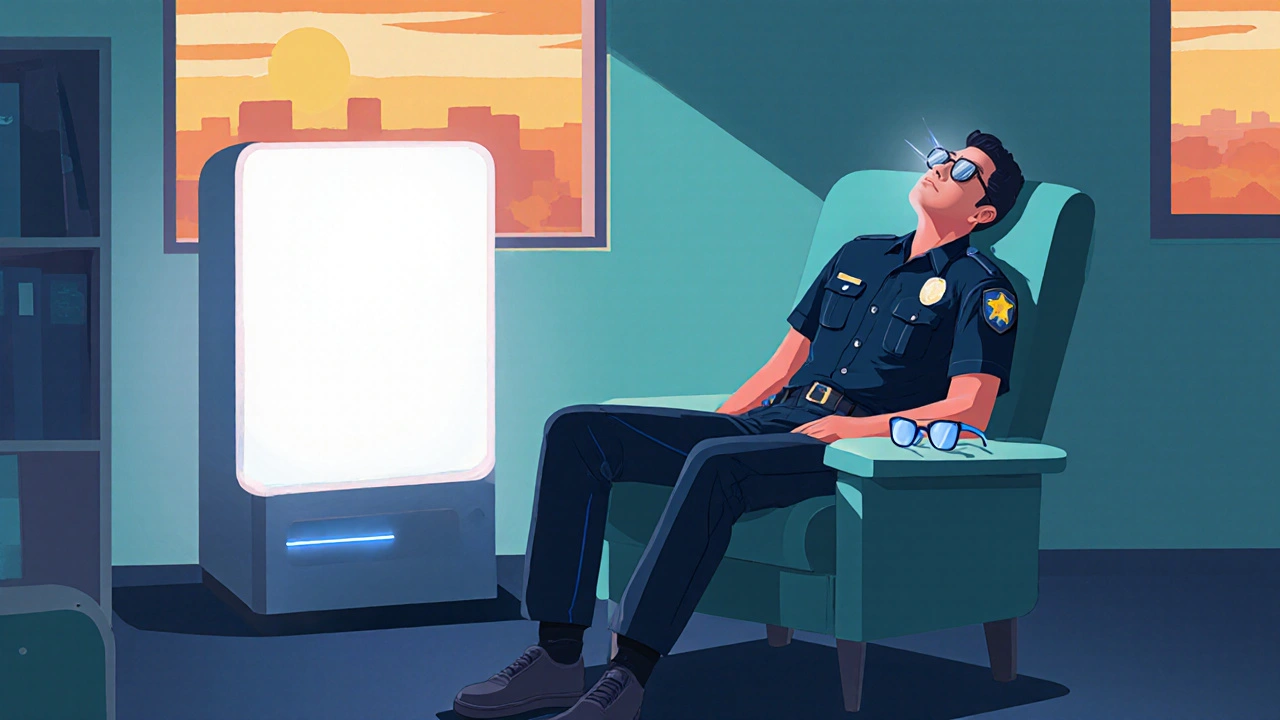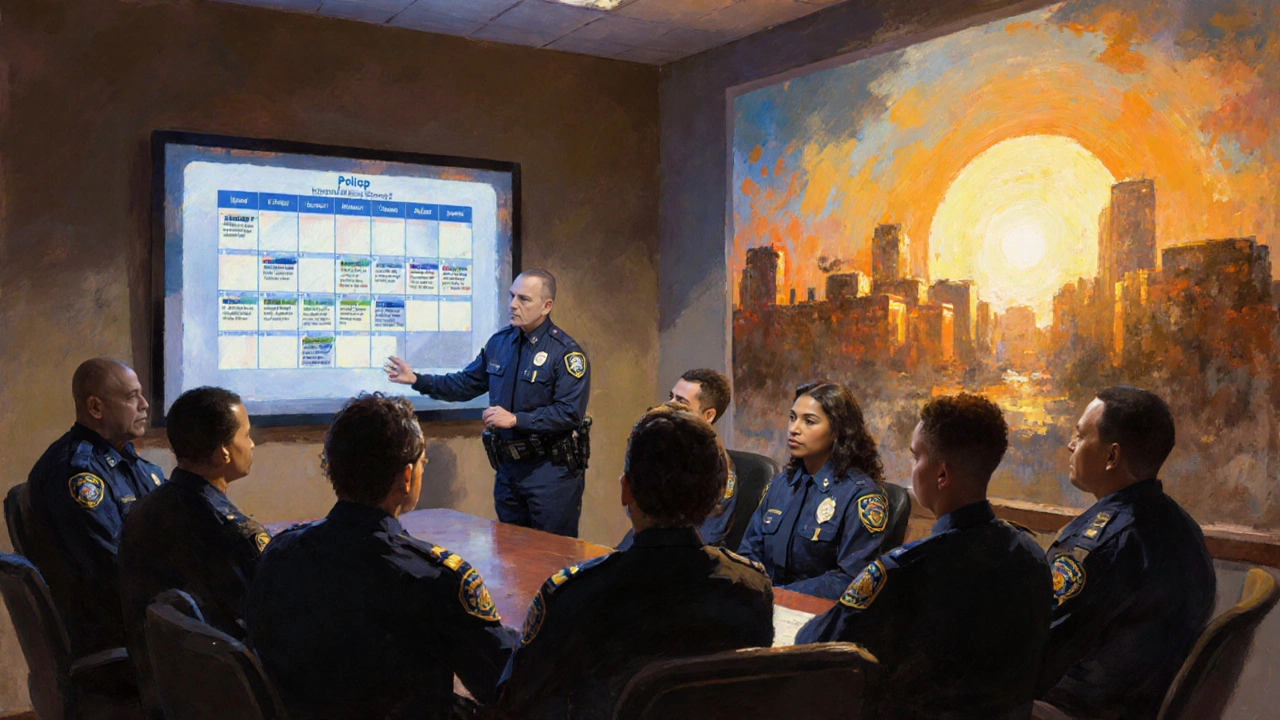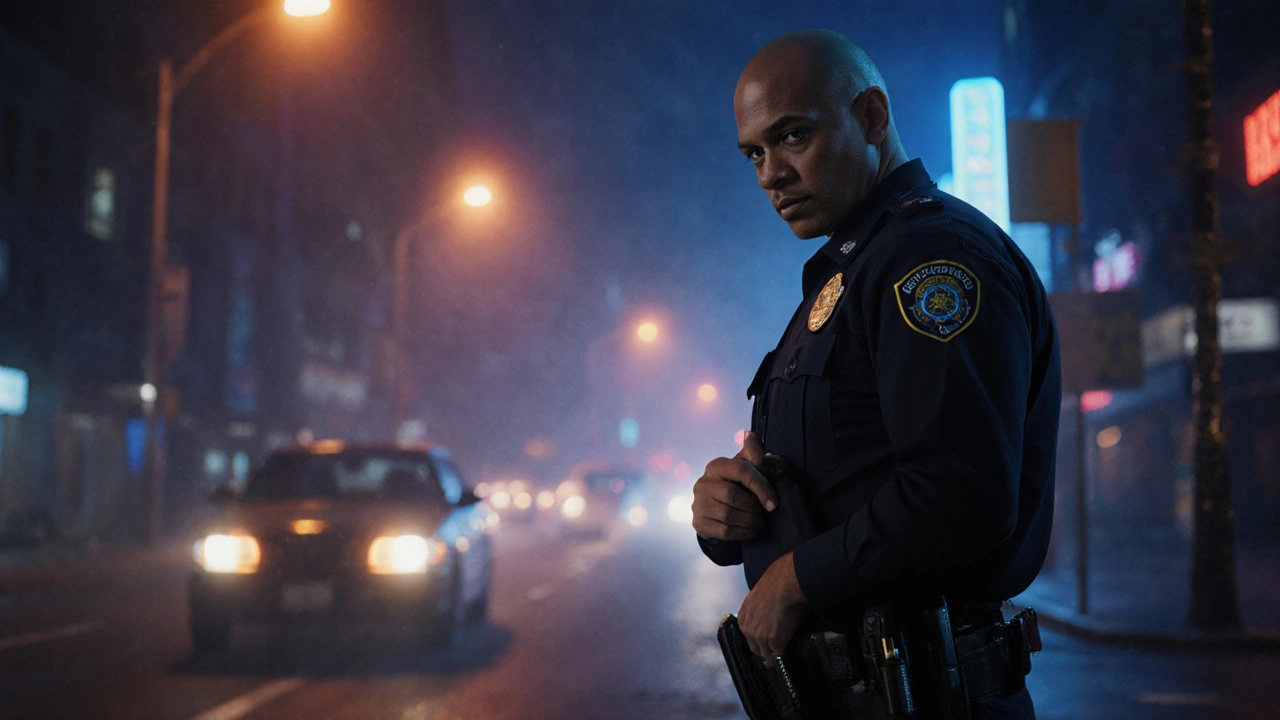Shift-Work Fatigue Impact Calculator
Fatigue Impact Assessment
Quick Takeaways
- Irregular hours disrupt the shift-work disorder cycle, raising fatigue and health risks.
- Sleep deprivation, stress hormones, and circadian misalignment combine to affect decision‑making.
- Targeted strategies - light therapy, fatigue risk management, and wellness programs - can restore performance.
Police work never follows a 9‑to‑5 schedule. When patrols rotate through night shifts, early mornings, and sudden overtime, the body’s internal clock gets thrown off. That mismatch is called Shift-Work Disorder - a chronic sleep‑wake problem that shows up as excessive sleepiness, insomnia, and mood swings. For law‑enforcement officers, the stakes are higher because a tired officer can jeopardize public safety, personal health, and career longevity.
Below you’ll find a step‑by‑step look at why shift work hits police officers hard, how it interacts with other occupational hazards, and what departments and individuals can do to stay sharp on the beat.
What is Shift-Work Disorder and How It Affects Police Officers
Shift-Work Disorder is classified by the American Psychiatric Association as a type of circadian rhythm sleep‑wake disorder. The condition emerges when a person’s work schedule forces sleep at times that conflict with their natural Circadian Rhythm. In simple terms, the body’s 24‑hour hormone cycle - especially melatonin release in the evening - gets out of sync.
For a Law Enforcement Officer, the mismatch can look like:
- Difficulty falling asleep after a night shift.
- Feeling wired during a morning briefing despite only a few hours of sleep.
- Increased irritability that spills over into community interactions.
Research from the National Institute for Occupational Safety and Health (NIOSH) shows that officers with chronic shift‑work disorder have a 30% higher risk of traffic accidents during off‑duty travel. The same study linked the disorder to elevated blood pressure and a 15% increase in reported musculoskeletal injuries.
The Ripple Effect: How Shift Work Interacts With Other Police‑Specific Risks
Shift work rarely exists in a vacuum. It often overlaps with other stressors that are common in policing:
- Sleep Deprivation - Missing restorative REM cycles impairs memory consolidation, a crucial skill for recalling suspect details.
- Post‑Traumatic Stress Disorder (PTSD) - Traumatic incidents can trigger hyper‑arousal, making it harder to wind down after a shift.
- Cortisol spikes - The stress hormone spikes during high‑stress calls and stays elevated when sleep is fragmented, contributing to chronic anxiety.
When these factors collide, decision‑making speed can drop by up to 20%, according to a 2023 study from the University of Sydney’s School of Public Health. That decline translates into slower reaction times during pursuits, delayed medical assistance, and a higher likelihood of procedural errors.
Identifying the Warning Signs Early
Early detection helps prevent the cascade of health and performance issues. Departments should look for a combination of self‑reported symptoms and objective data:
- Self‑assessments indicating daytime sleepiness (use the Epworth Sleepiness Scale).
- Patterns of overtime that exceed 12hours per shift for more than three consecutive weeks.
- Increased sick‑leave usage for “fatigue‑related” reasons.
Technology can aid the process. Wearable devices that track heart‑rate variability (HRV) and sleep stages provide real‑time feedback on an officer’s recovery. When HRV drops below 50ms for several nights, it signals inadequate restorative sleep.

Practical Strategies for Individual Officers
While department‑wide policies matter, personal habits are the first line of defense. Below is a toolbox of evidence‑based tactics.
1. Light Management
Exposure to bright light suppresses melatonin and shifts the circadian clock. Officers finishing a night shift should wear blue‑light‑blocking glasses for the first hour after leaving the precinct, then seek bright, natural light during the day. A 2022 field trial showed a 45% reduction in sleep latency when participants followed this routine.
2. Strategic Napping
A 20‑minute power nap before a night shift can boost alertness without causing sleep inertia. Longer naps (90minutes) are useful when the schedule allows a full sleep cycle, but they must be timed to avoid grogginess during the next duty period.
3. Consistent Sleep Window
Even on days off, aim for a regular sleep window (e.g., 1am-7am). This consistency reinforces the circadian rhythm and reduces the “social jetlag” effect that many officers experience on weekends.
4. Nutrition and Hydration
High‑protein meals and adequate water intake sustain energy levels. Avoid caffeine after the second half of a night shift, as it can delay sleep onset.
5. Physical Activity
Moderate aerobic exercise (30minutes) performed at least 3hours before bedtime improves sleep quality. Heavy resistance training should be scheduled earlier in the day to prevent heightened adrenaline at night.
Organizational Policies That Make a Difference
Individual efforts work best when backed by department‑level initiatives.
Fatigue Risk Management (FRM)
FRM programs treat fatigue like any other occupational hazard. Key components include:
- Scheduling software that caps consecutive night shifts at three.
- Mandatory rest periods of at least 10hours between shifts.
- Regular fatigue assessments using validated questionnaires.
Occupational Health Programs
These programs provide access to sleep specialists, counseling, and wellness resources. A pilot in the Queensland Police Service reduced shift‑work‑related sick leave by 22% after introducing on‑site sleep clinics.
Education and Stigma Reduction
Training sessions that explain the science behind shift‑work disorder help officers recognize symptoms without feeling weak. Peer‑support groups also create a safe space to discuss sleep struggles.
Comparing Intervention Options
| Intervention | Impact on Sleep Quality | Effect on Operational Performance | Implementation Cost |
|---|---|---|---|
| Bright‑Light Therapy | High - 40% improvement in sleep onset latency | Moderate - 15% faster reaction times | Medium - equipment + training |
| Strategic Napping Policies | Medium - reduced daytime sleepiness by 30% | High - 20% increase in decision accuracy | Low - schedule adjustment only |
| FRM Software | Variable - depends on compliance | High - 25% drop in fatigue‑related incidents | High - licensing and integration |
| Peer‑Support & Education | Low - minor direct sleep effect | Moderate - improves reporting of fatigue | Low - facilitated by existing staff |
Choosing the right mix depends on budget, leadership buy‑in, and the specific shift patterns of the force. For a small rural department, starting with strategic napping and peer‑support may deliver quick wins, while larger urban agencies can invest in FRM software and light‑therapy stations.
Potential Pitfalls and How to Avoid Them
Even well‑intentioned programs can falter. Common mistakes include:
- One‑size‑fits‑all scheduling - Not all officers respond the same way to night shifts. Offer flexible rostering where possible.
- Ignoring individual health conditions - Officers with asthma or diabetes may need tailored sleep‑hygiene advice.
- Stigma around reporting fatigue - If officers fear disciplinary action, they’ll hide symptoms. Clear policies that protect reporting are essential.
Regular audits of the program’s outcomes, coupled with anonymous feedback, keep the initiative on track.
Next Steps for Officers and Departments
By now you should have a clear picture of why shift‑work disorder matters, what warning signs to watch, and which tools actually help. Here’s a concise action plan.
- Conduct a baseline fatigue survey within the unit.
- Introduce a simple light‑management protocol (blue‑light glasses, daytime bright exposure).
- Implement a 20‑minute power‑nap window before night shifts.
- Roll out FRM scheduling software or, if budget‑tight, manually enforce a maximum of three consecutive night shifts.
- Set up quarterly wellness workshops that include sleep specialists.
Track metrics such as overtime hours, sick‑leave days, and incident reports. Adjust the program based on data and officer feedback. When the crew sees real improvements-fewer accidents, better mood, clearer thinking-they’ll buy into the changes.

Frequently Asked Questions
Can shift‑work disorder be cured?
There is no single cure, but symptoms can be managed with consistent sleep‑hygiene, light therapy, and organizational support. Many officers experience significant relief once a tailored plan is in place.
How much sleep does a night‑shift officer need?
Adults generally need 7‑9hours of sleep. For night‑shift officers, splitting sleep into two blocks (e.g., 3hours before the shift and 4hours after) often works better than a single long stretch.
Is napping on duty allowed?
Policies vary. Many departments now permit short, scheduled naps in designated break rooms, especially during long night patrols. The key is to keep naps under 30minutes to avoid grogginess.
What role does cortisol play in shift‑work fatigue?
Cortisol peaks during stressful calls and stays elevated when sleep is fragmented. Chronic high cortisol impairs glucose metabolism, leading to energy crashes and mood swings, which worsen fatigue.
Are there any legal requirements for police shift scheduling in Australia?
Australian workplace law mandates a minimum 10‑hour break between shifts and limits overtime to 38hours per week unless a special arrangement is in place. Some state police services have additional health‑and‑safety guidelines that reference fatigue management.


ADam Hargrave
October 4, 2025 AT 13:47Only the brave can keep the streets safe while the system robs them of sleep 😒
Michael Daun
October 13, 2025 AT 18:40hey folks, shift work is rough but we can all help each other out
try to keep a consistent sleep window even on days off
short naps and caffeine in moderation are your friends
Rohit Poroli
October 23, 2025 AT 00:53From a chronobiology perspective, the misalignment between endogenous melatonin peaks and external light exposure creates a phase shift that impairs alertness.
Policing duties demand rapid decision‑making, which is compromised when the suprachiasmatic nucleus is out of sync.
Integrating bright‑light therapy after night shifts can advance the circadian phase.
Strategic napping before a shift restores short‑term memory consolidation.
Employers should monitor HRV metrics to detect cumulative fatigue in real time.
William Goodwin
November 1, 2025 AT 07:06Imagine the city lights as a relentless drumbeat, echoing the internal turmoil of an officer whose body clock has been hijacked 🌃.
When the night becomes day, the mind fights a silent war against inertia.
Light boxes, power naps, and disciplined sleep windows become the armor we need.
Let’s not forget that morale thrives when we acknowledge these biological battles.
Isha Bansal
November 10, 2025 AT 13:20While the poetic description is vivid, the terminology should adhere to standard grammatical conventions; for instance, "night becomes day" is a tautology that could be replaced with "night shifts blur into daylight".
Additionally, commas are required before conjunctions in compound sentences to improve readability.
Precision in language mirrors the precision needed in operational protocols.
Ken Elelegwu
November 19, 2025 AT 19:33One might argue that the philosophical underpinnings of duty demand a transcendence of physiological constraints, yet the empirical data decisively counters such romanticism.
The intersection of neurology and law enforcement is not a mere curiosity but a critical frontier for public safety.
Gene Nilsson
November 29, 2025 AT 01:46It is incumbent upon every department to uphold the moral imperative of safeguarding the well‑being of its officers; neglecting sleep health is tantamount to willful endangerment.
Vintage Ireland
December 8, 2025 AT 08:00From an inclusive standpoint, offering flexible rostering respects the diverse circadian profiles of officers and fosters a culture of empathy.